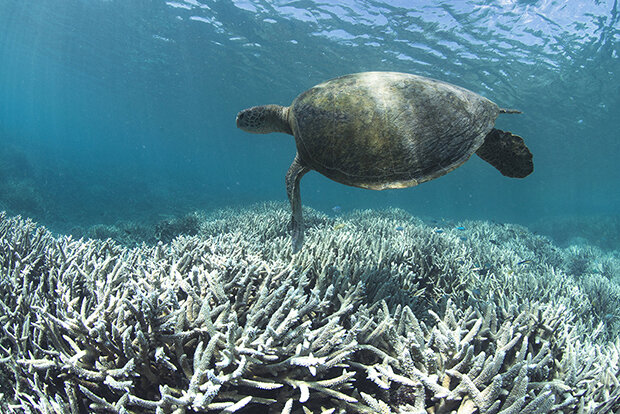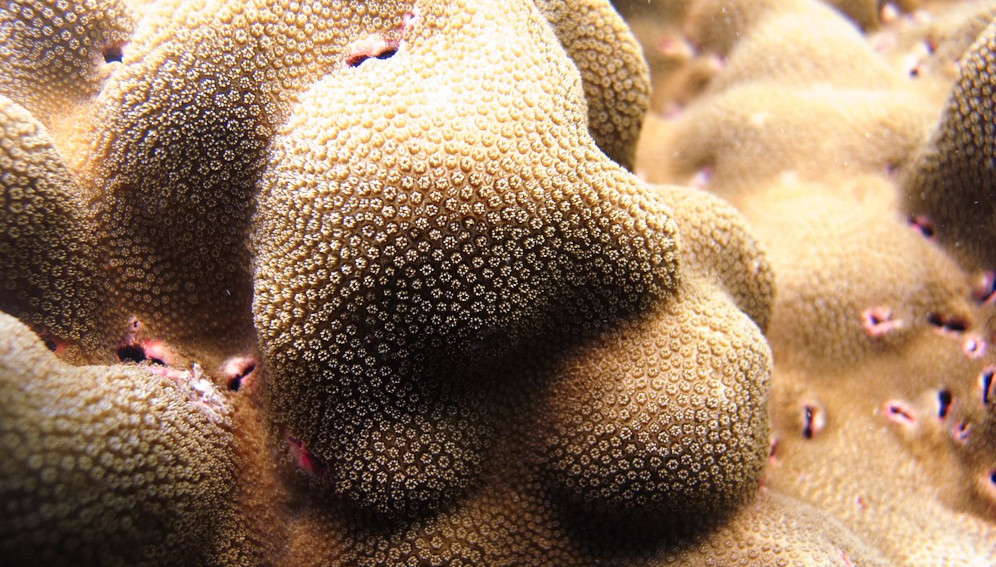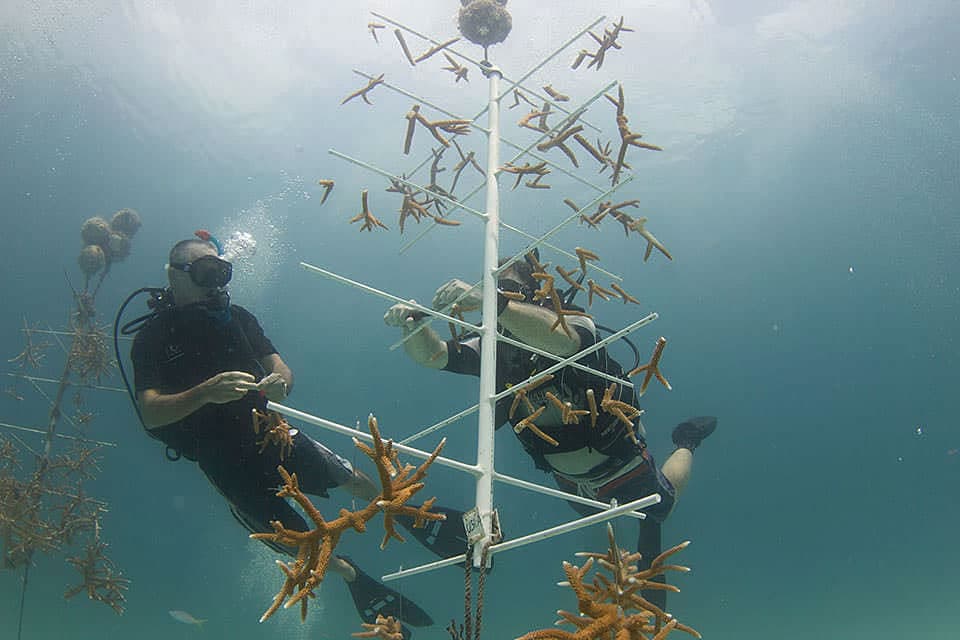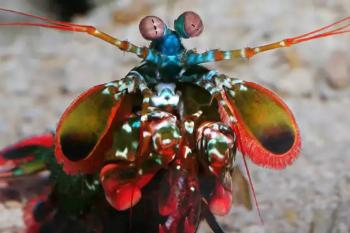
As of April 2024, there have been record-breaking temperatures every day for more than a year. In 2023, ocean temperatures were warmer than they’ve been in over a hundred years. What does this mean for ocean ecosystems in general and for coral reefs, the most impacted, in particular?
At Shape of Life we’ve covered the catastrophic bleaching of Australia’s Great Barrier Reef before. With the current ocean heat wave, this alarming event is happening again. For the fifth year of eight years, we’re experiencing the most severe ocean warming temperature on record on the Great Barrier Reef. And scientists have found damage as deep as 18 meters (59 feet). With sea surface temperatures between 0.5C and 1.5C hotter than expected for this time of year, it’s unclear how much of the reef will recover.
It's not just the Great Barrier Reef. The 2023 extreme marine heatwave engulfed much of the eastern tropical Pacific and wider Caribbean. NOAA reports, “Many Caribbean reefs experienced historically high heat stress that started much earlier (one-to-two months) and was sustained for much longer than normal.” The heat stress has been so extreme in some places that it has led to acute heat shock that rapidly kills corals before they even show signs of bleaching. What this means for the ecosystem as a whole is unclear and will likely take years to understand.
Coral bleaching happens when the ocean is too warm for the symbiotic algae that live in coral tissues. The stressed corals eject the algae – that’s coral bleaching. It’s not just color the symbiotic algae give but also nutrients.
We will see more and more bleaching events unless we decrease greenhouse gas emissions substantially. “We are on the brink of losing coral reefs,” scientist Hoegh-Guldberg says. “Surely, our world leaders won’t let the fate of the world’s coral reefs simply slip through our fingers.”
Heat Resistant Adaptation
There is some good news for corals. Scientists have identified some coral species that are more resilient to ocean heat waves than others.
These are corals that grow in naturally warmer environments, like lagoons around coral atolls. Scientists from Woods Hole Oceanographic Institute studied coral reefs in Palau. Researcher Anne Cohen says, “Coral can be heat-resistant for different reasons. In the Rock Islands, we know the corals we studied are genetically adapted to high temperatures although we don’t yet know what genes are involved.” It’s important to map and protect resilient species like the ones in the Rock Islands that can help repopulate damaged reefs.

Steve Palumbi, a professor of Oceans at the Stanford Doerr School of Sustainability, along with his lab group have developed a low-cost way to test corals’ resistance to heat. Steve’s group put a small sample from different corals in a laboratory tank and tested their survival at increased temperatures. They analyzed the genome of both the corals and their algae to understand what makes them resilient. “The big idea is that evolution has crafted a solution to help corals in the future. It’s done, it’s built, it’s sitting there, and we need to learn how to use it,” said Palumbi.
Can We Outgrow the Heat?
Once species identified by scientists conservation groups can grow corals in a nursery and transplant the more resilient corals to vulnerable reefs. This is already happening in many places. One of our Featured Scientists works on projects growing and planting corals on reefs in Costa Rica. It’s happening in Hawaii, the Florida Keys and on the Great Barrier Reef. Take a look at This video about a coral nursery on the Great Barrier Reef.
Read about new methods to help coral reefs.

















